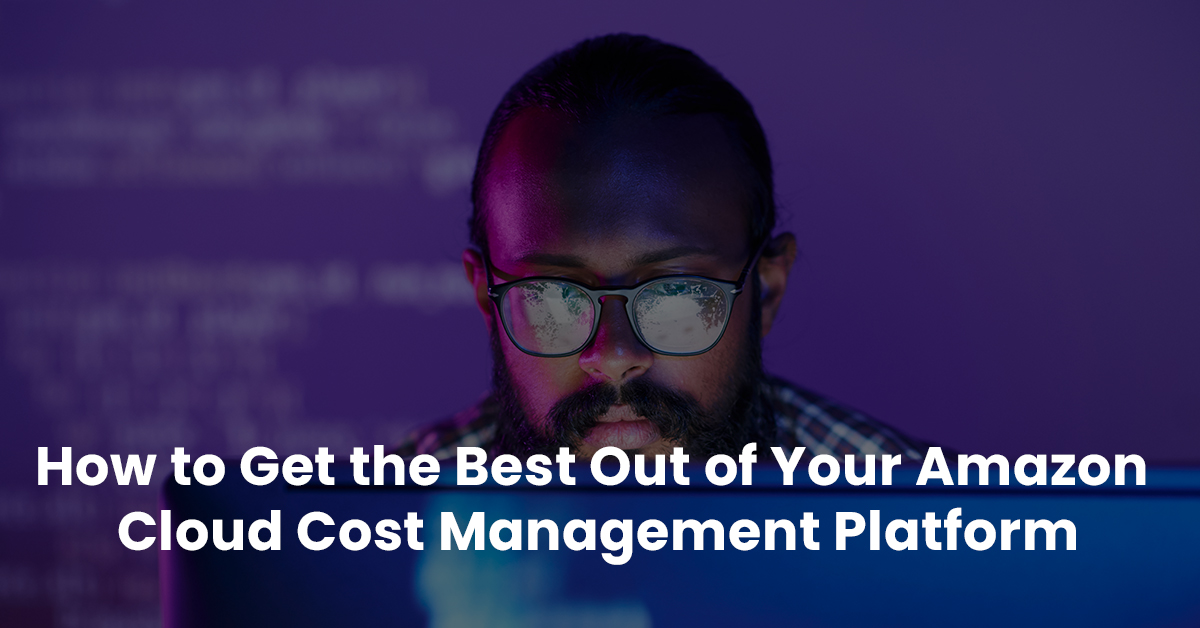AWS pricing plans come with pros and cons. While discounts help users save on costs, AWS bills can be a huge hindrance to growth. That’s why everyone needs to make good use of the AWS cloud cost management platform. The platform dives deep into AWS cost centers and helps you optimize processes.
Some of the reasons for skyrocketing costs include:
- Inadequate visibility into cloud operations. Some operations cost more than others.
- Advanced and heavy workloads
- Data transfers among multiple AWS regions
- Rejected chargebacks
The good news is AWS has already solved this problem. All you have to do is implement these best practices.
Getting More Out of Your Amazon Cloud Cost Management Platform
Here are various ways to fully utilize your Amazon cloud cost management platform:
Model Future Costs Based on Current Trends
AWS cost management tools give lots of data. However, companies can get valuable insights if they monitor usage costs and model future consumption. From your cost explorer dashboard, identify how your AWS bills vary with time. AWS Explorer lets you estimate spending for the upcoming 12 months. Even though the figures are estimates, you can factor in real-life situations to make the forecasts more realistic. Cloud expense modeling will help you set the right budget for AWS resources.
Use Consolidated Billing for Multiple Accounts
AWS allows users to create multiple accounts. In addition, you can have various cloud and hybrid environments. For these cases, it’s difficult to bill each section separately. AWS Consolidated Billing lets you compile multiple bills into one invoice. An organization that combines its usage costs is likely to get a discount on its bills. For example, AWS offers volume pricing discounts for users who use a lot of cloud resources.
Get the Most Out of Cost and Usage Reports
The AWS Cost and Usage Reports dashboard has good insights for every cost-center manager. You can dig down to individual users and see how costs vary with time. You can identify high-cost hours and days. If the costs are high for a particular period, find out why. Eliminate nonproductive times and schedule them as off-times. But when doing development and other productive operations, schedule these hours as on-times.
Monitor Key Cloud Metrics
Each cloud cost management tool has several metrics. Among these metrics, you have to pay attention to growth metrics. Monitor metrics that are key performance indicators. Important metrics measure reliability, security, availability, and much more. For example, while AWS may have good uptime, you can host third-party tools on an external server, which may affect the performance of your applications. It’s important to note that metrics aren’t absolute numbers. Metrics are ratios, and you should use them for comparison purposes. There’s no perfect digit you should aim to hit. But whatever metric you get, focus on improving it. Examples of metrics include:
- Security: The total threats on your application vs. the average industry threats
- Availability: Your system availability vs. the industry average
- Scalability: The scalability of your application vs. competitors vs. industry average
The Bottom Line
As you optimize Amazon cloud cost management platforms, you’ll realize that most tools have essential features reserved for premium subscribers. Therefore, if you don’t manage them well, cost management tools could become added costs. However, you can eliminate the need to pay for separate tools.
Instead, choose a tool that consolidates everything under one dashboard. With the nOps cloud management platform, you can optimize your AWS costs with little need for other tools. As companies migrate to the cloud, they focus more on performance. But as they scale, costs become a huge hindrance to revenue. That’s why companies need to pay attention to an all-in-one cloud cost management solution. nOps will help you optimize costs throughout your SaaS life cycle.



